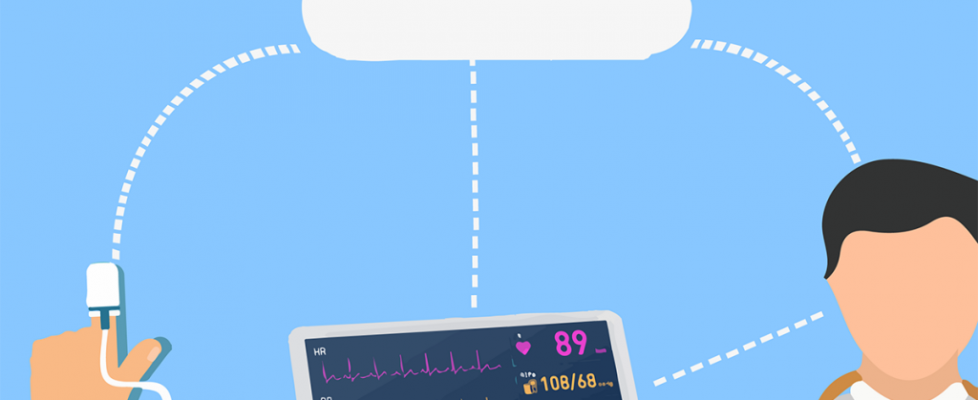Remote monitoring played critical role in managing pandemic surge
As hospitals faced a deluge of patients early in the COVID-19 pandemic, many implemented remote solutions to manage individuals at home to keep from being overwhelmed – all at a speed unthinkable in more normal times. That experience promises to accelerate and transform telemedicine long after the threat of COVID-19 recedes, according to a report by Vizient Inc. In the short-term, lessons from these leaders provide a roadmap for others to cope with an expected surge in cases this fall.
Recent research indicates that about 80% of COVID-19 patients do not require hospitalization at any point in their illness, and that the other 20% have an average of seven days from symptom onset before they need to be admitted. Remote monitoring can help hospitals and other providers track all these patients at home, while ensuring that anyone who takes a turn for the worse quickly receives the needed stepped-up care.
With cases and hospitalizations on the rise across much of the U.S. again and a second wave sweeping Europe, health care systems that did not use the technology earlier may need to quickly stand up remote monitoring to manage their capacity in the coming months.
“The COVID-19 pandemic has created an environment where hospitals are being compelled to consider novel technologies that can help them manage their patients more efficiently and improve outcomes,” said Joe Cummings, technology program director at Vizient.
Start simple
While the urgency of a pandemic situation drove many providers to the same conclusions – remote monitoring could reduce viral spread, keep patients safe, and increase their capacity – how they acted on those conclusions varied widely.
The key to success early on turned out to be keeping the process simple and patient friendly. That could mean classic, old-school solutions for older individuals, those with limited technological proficiency, or people without mobile devices, such as delivering cheap thermometers and clip-on pulse oximeters and having a nurse call once or twice a day for check-ins. Among the programs identified by Vizient, three also included blood pressure cuffs in their patient kits.
While the pulse oximeter is a simple, easy-to-use device, Cummings called it the “big success story” of the remote monitoring adoption. He noted that one study found that in patients given the clip-on devices to use at home who later required hospitalization, half experienced a drop in their blood oxygen levels as measured by their pulse oximeter before exhibiting any other symptoms. Further, scores of 92 or 93 while at rest at home indicated a greater likelihood of requiring intensive care or ultimately suffering organ failure. For other patients, the pulse oximeter provided comfort, as they could see their peripheral capillary oxygen saturation, or SpO2, remained at a very healthy 98 or 99.
The speed needed to respond to the rapid influx of new patients left health systems no time to start from scratch, as the Vizient report made clear. The University of Minnesota Fairview Health rolled out a program based on its enhanced recovery after surgery patient management system in two weeks. A system in Sydney repurposed a virtual care system designed for palliative care and chronic care management. The Cleveland Clinic used a custom-built electronic health record module based on an Epic platform, and Mount Sinai Health System in New York adapted a monitoring system for stroke.
Providence Health System used two third-party platforms, Xealth and Twistle, to collect data from devices and enter them into the electronic health record and to integrate virtual health into the clinical workflow. Working together, Providence reported the three organizations had the system up and running in four days.
Future developments
Some systems provided tablets for patients to record their symptoms; others tapped into wearable devices or modified existing apps. “There’s a huge trend to mobile apps that record all this data,” Cummings said, but “the future is about wearables because they’re more user-friendly and record continuous data as opposed to discrete data.”
With an unpredictable disease like COVID-19, continuous measurement can save lives. “We saw in a pulse oximeter study that those patients who needed to be hospitalized did not gradually deteriorate; they had a rapid decline, and if you’re not measuring it continuously, you may not catch them quickly enough,” Cummings noted.
Turnkey solutions likely will dominate the future of monitoring COVID-19 patients for hospitals that have not yet developed their own systems. “There are options that they can ramp up rather quickly using someone else,” Cummings said. “There are companies implementing remote platforms and hospitals that might function as a regional hub in offering remote monitoring services. They could Fedex sensors and handle calls. We already run many rural ICUs remotely; you don’t have to be there to manage patients.”
Hospitals have started to expand the situations in which they use remote monitoring for COVID-19 patients. The University of Miami and the Mayo Clinic have started using their systems to keep tabs on patients released a little earlier than they might otherwise. “We’re seeing it even in more acute care,” said Cummings, “it could be done not just with patients doing pretty well, but even as an almost virtual ICU at home with nurses visiting … more regularly and coupled with continuous remote monitoring for various parameters. We’re already seeing that trend starting up.”
In the long term, the use of telemedicine and integrated remote monitoring appears here to stay. “My philosophy is that you can’t put toothpaste back in the tube,” Cummings said. Patients who like the convenience or continue to worry about contracting the virus in waiting rooms will demand access to telemedicine. And as virtual care becomes more common, remote monitoring will necessarily increase as well, he asserted. “Remote monitoring is one of the most disruptive technologies, and it’s a necessary part of virtual health. If you want to improve the quality of telehealth, then you have to have the same things that go on in an office visit.”

